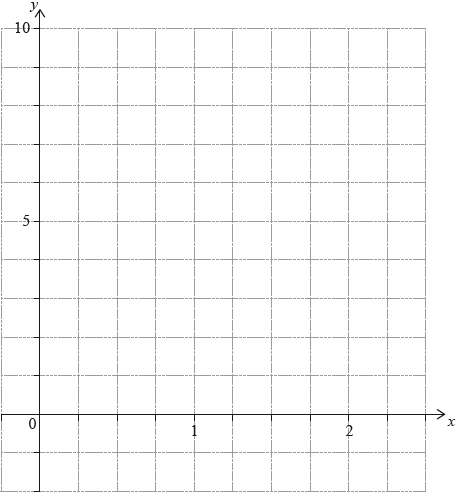DP Mathematics: Applications and Interpretation Questionbank

AHL 2.7—Composite functions, finding inverse function incl domain restriction
| Path: |
Description
[N/A]Directly related questions
-
21M.1.AHL.TZ2.2b:
Find an expression for the inverse function. The domain is not required.
-
21M.1.AHL.TZ2.2c:
Write down the range of .
-
21M.1.AHL.TZ2.2a:
Find the range of .
-
22M.1.AHL.TZ2.10a:
Find an expression for . You are not required to state a domain.
-
22M.2.AHL.TZ1.6b:
Find the value of and the value of .
-
18M.1.AHL.TZ2.H_10a:
Find the inverse function , stating its domain.
-
18M.1.AHL.TZ2.H_10b.i:
Express in the form where A, B are constants.
-
18M.1.AHL.TZ2.H_10b.ii:
Sketch the graph of . State the equations of any asymptotes and the coordinates of any intercepts with the axes.
-
18M.1.AHL.TZ2.H_10c:
The function is defined by , for ≥ 0.
State the domain and range of .
-
18M.2.AHL.TZ2.H_10a.i:
Sketch the graph of for .
-
18M.2.AHL.TZ2.H_10a.ii:
With reference to your graph, explain why is a function on the given domain.
-
18M.2.AHL.TZ2.H_10a.iii:
Explain why has no inverse on the given domain.
-
18M.2.AHL.TZ2.H_10a.iv:
Explain why is not a function for .
-
18M.2.AHL.TZ2.H_10b:
Show that .
-
18M.2.AHL.TZ2.H_10c:
Sketch the graph of for t ≤ 0. Give the coordinates of any intercepts and the equations of any asymptotes.
-
18M.2.AHL.TZ2.H_10d.i:
Find and β in terms of .
-
18M.2.AHL.TZ2.H_10d.ii:
Show that + β < −2.
-
18N.1.AHL.TZ0.H_3a:
For , sketch the graph of . Indicate clearly the maximum and minimum values of the function.
-
18N.1.AHL.TZ0.H_3b:
Write down the least value of such that has an inverse.
-
18N.1.AHL.TZ0.H_3c.i:
For the value of found in part (b), write down the domain of .
-
18N.1.AHL.TZ0.H_3c.ii:
For the value of found in part (b), find an expression for .
-
18N.3.AHL.TZ0.Hsrg_4a.i:
Find .
-
18N.3.AHL.TZ0.Hsrg_4a.ii:
Find .
-
18N.3.AHL.TZ0.Hsrg_4b:
State with a reason whether or not and commute.
-
18N.3.AHL.TZ0.Hsrg_4c:
Find the inverse of .
-
17N.1.SL.TZ0.S_5a:
Find .
-
17N.1.SL.TZ0.S_5b:
Given that , find the value of .
-
18M.1.SL.TZ1.S_3c:
On the grid above, sketch the graph of f −1.
-
17M.2.SL.TZ2.S_6a:
Show that .
-
17M.2.SL.TZ2.S_6b:
On the following grid, sketch the graph of , for .

-
17M.2.SL.TZ2.S_6c:
The equation has exactly two solutions, for . Find the possible values of .
-
19M.2.SL.TZ1.S_9a:
Find the gradient of .
-
19M.2.SL.TZ1.S_9b:
Find u.
-
19M.2.SL.TZ1.S_9c:
Find the acute angle between and .
-
19M.2.SL.TZ1.S_9d.i:
Find .
-
19M.2.SL.TZ1.S_9d.ii:
Hence, write down .
-
19M.2.SL.TZ1.S_9d.iii:
Hence or otherwise, find the obtuse angle formed by the tangent line to at and the tangent line to at .
-
16N.2.SL.TZ0.S_1a:
Find .
-
16N.2.SL.TZ0.S_1b:
Find .
-
16N.2.SL.TZ0.S_1c:
Solve .
